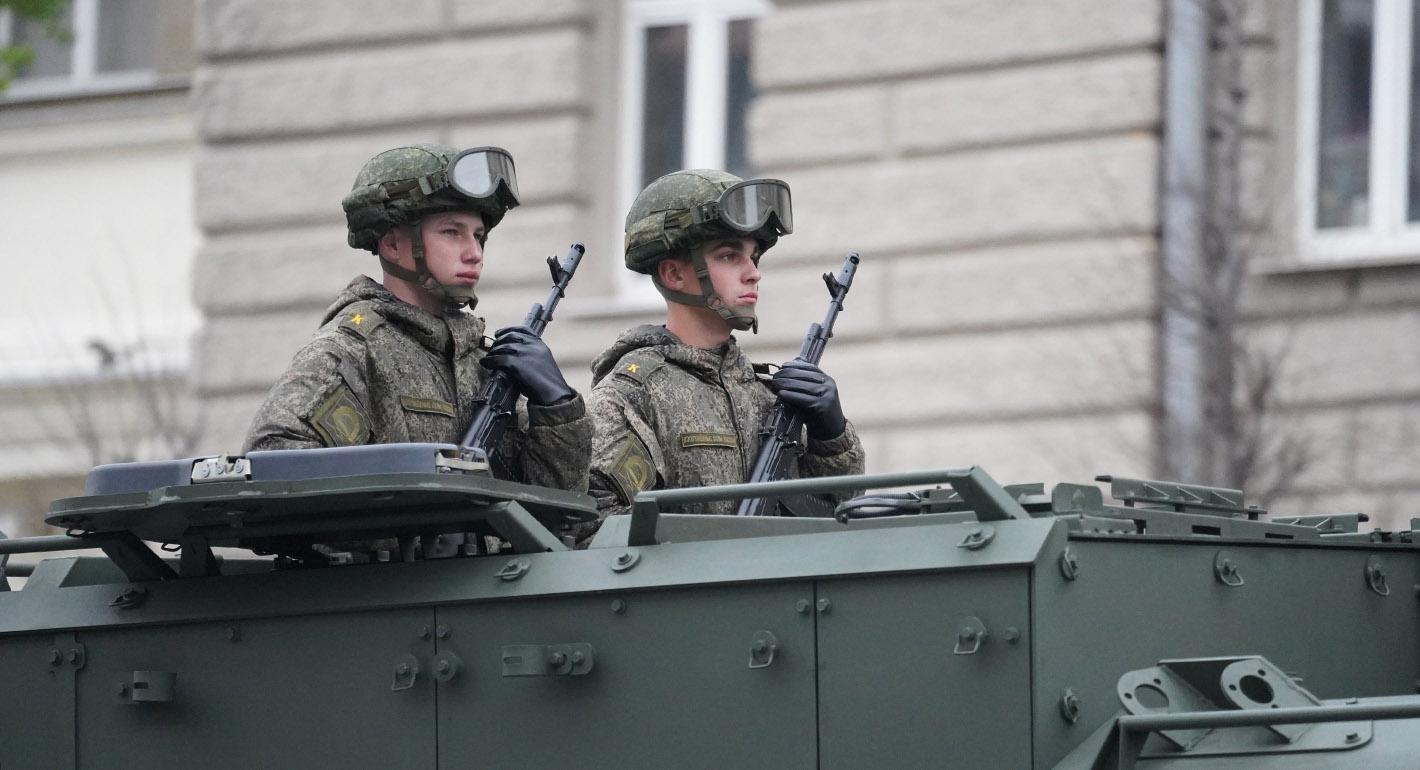The West’s delay in extending aid to Ukraine has bolstered Putin’s sense of assurance. War fatigue is palpable in the West, while Russia possesses ample resources, both human and financial. From the Kremlin’s standpoint, U.S. aid may not directly challenge Russian military superiority in Ukraine, but could heighten the costs associated with maintaining it, thereby postponing Russia’s victory. Indeed, given the difficulties in getting the aid package approved by U.S. Congress, Putin may view this one as potentially the last.
At the same time, should Ukraine, leveraging Western support, do its homework in terms of mobilization, fortification, and frontline defense, the Kremlin will be forced to react. Putin has committed to record-breaking war expenditure of 6 percent of GDP (and combined defense and national security expenditures exceeding 8 percent) in 2024. Next year, a gradual decline is anticipated. If Ukraine succeeds in pushing back against the Russian army, it could prompt Moscow to plan for even higher military spending in 2025 than the currently projected 5 percent of GDP. The Kremlin possesses the resources for this, albeit at considerable medium-term economic cost.
Russia’s economy is currently experiencing an upswing propelled by a fiscal impulse (the impact of government expenditure and tax policies on the budget balance) of 10 percent of GDP in 2022–2023 and import substitution, which spurred heightened demand for goods and services. Russia’s GDP grew by 5.1 percent in Q3 2023 and 4.9 percent in Q4 2023. While assessments for Q1 2024 are pending, leading indicators suggest no slowdown.
In April, the IMF described the Russian economy as overheated, citing a significant excess of demand over supply. The IMF predicts a growth rate of 3.2 percent, indicating continued overheating. The Russian government is slightly less optimistic and predicts growth in 2024 of 2.8 percent, which means that money will continue to be pumped into the economy, despite the double-digit value of resources (the key rate has been 16 percent for two quarters) and rising labor costs. Optimistic business outlooks notwithstanding, there is a shortage of capacity to increase supply, which is unable to keep pace with demand driven by state spending.
Russia can afford this level of spending because its revenues are swelling. Both primary components of the budget—energy and non-energy revenues—saw impressive growth in Q1 2024. Oil and gas revenues surged by 79 percent compared with the same period last year, totaling $32 billion. Non–oil and gas revenues reached $35 billion, a 24 percent increase. The total budget deficit for the three-month period stood at $6.5 billion, equivalent to 0.3 percent of Russia’s GDP: well within the government’s 2024 deficit target of 0.9 percent of GDP.
The surge in oil and gas revenues can be attributed to three main factors: high oil prices, windfall taxes, and a new taxation formula on mineral extraction that means that the tax is now levied “at the well,” irrespective of the volume of oil actually exported. The increase in non-energy revenues, meanwhile, stems from Russia’s overall economic growth. Increased domestic demand and spending have led to higher income for the state, primarily through VAT and turnover taxes.
The budget is further supported by a widening current account surplus, which surged by 43 percent year-on-year to $22 billion in the first quarter. Although both imports and exports declined, imports witnessed a steeper drop (10 percent compared to 5 percent for exports). A large part of this decline is due to the U.S. threat to impose secondary sanctions on Chinese banks. At the same time, a significant proportion of payments are still taking place, which indicates that the transaction chains are adapting to the new realities: they are becoming longer and more expensive.
Government spending will continue to bolster domestic demand. By mid-April, the Finance Ministry had allocated 11.7 trillion rubles out of a planned 37.3 trillion, representing a slower spending rate compared to 2023, when the government frontloaded significant expenditure.
The current economic climate enables the Kremlin to allocate budgetary resources for the war effort while simultaneously earmarking funds for future military expenditure. But a significant structural obstacle is looming: the scarcity of available manpower in the economy. Consequently, salaries are expected to continue rising, outpacing labor productivity, which is further hampered by technology sanctions. These dynamics underpin the growth in domestic demand and non–oil and gas budget revenues in nominal terms, but also contribute to an acceleration in inflation.
Rising prices, including for industrial products, and a shortage of labor are the main problems facing the Russian military-industrial complex today. But they do not seem insurmountable if budget funds are available: some civilian production facilities can be converted for military production. It all depends on Putin’s goals, but the economy has become a function of what is happening on the front line.
The current favorable budgetary situation and Russia’s adeptness at circumventing sanctions have in the medium term postponed Putin’s need to make tough decisions, namely whether to persist in increasing military spending, making lavish payments to the public, and maintaining macroeconomic stability through manageable inflation. The solution to this trilemma already looks impossible but lays beyond the Kremlin’s planning horizon.
The Russian economy increasingly resembles a marathon runner battling the flu yet bolstered by steroids, propelling them forward in the race. Currently around the 15th kilometer, the runner faces slim odds of winning but persists, sustained by the performance-enhancing effects of the steroids. Even though the Kremlin won’t win this marathon, Russia’s finances appear stable, meaning constant support to Ukraine by the West will remain essential beyond 2025. The U.S. and its allies should also redouble efforts to reduce Russia’s ability to circumvent sanctions and bathe in export revenues that will ultimately bloat its military spending.






